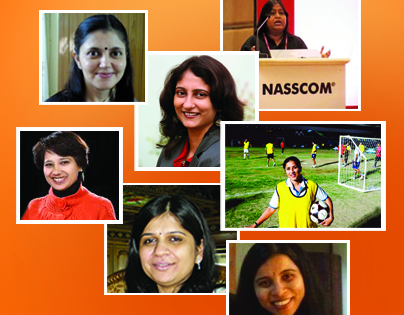If today a survey in done in schools across India and students are asked some questions like,
- What are your favorite hobbies or pastime?
- What do you do after going back home from school?
- What do you do during holidays?
You’ll get all sorts of answers but ‘Entrepreneurship’. Even worse, if the following question is also included,
Have you heard about the word “Entrepreneurship”?
I am guessing a depressingly low percentage would answer ‘yes’. That’s because the concept of ‘entrepreneurship being taught as a subject or an extra-curricular’ is non-existent in Indian schools.
Schools play critical role in defining and determining a child’s way of thinking, perception about the world, mental and physical development and so forth. Schools shape children’s goals and aspirations. Children have an amazing ability to pick things up very quickly. The adoption of a concept is much easier in case of a child than an adult. We cannot expect India to produce a huge army of young home grown entrepreneurs when we don’t introduce this concept to them early on. It’s like expecting a country to have successful scientists or doctors without introducing science in schools. We benchmark Indian startup ecosystem against that of US based total annual VC funding, number of technology startups emanating, number of successful exits, etc., but forget that beneath all those facts and figures, there lays a very fundamental difference in the philosophy these two societies and, thus, their education systems have been built. Success of America has a lot to do with their education system which promotes entrepreneurial and excogitative attitude. Indian education system, on the contrary, is more conservative and inclined towards rote learning.
Trust me when I say that planting the idea of entrepreneurship in a child’s brain can do wonders!!
That’s because, it will ensure,
- Smarter kids (child’s development wont be restricted by bulky books)
- Better leadership qualities (entrepreneurship is all about leadership)
- Better problem solving and analytical thinking (child would explore innovative solutions as no book would have written answers)
- Better sales/marketing skills (something which Indians are always criticized of!)
- Better programmers (I guess in many cases the next logical step after ideating something is learn programming)
- Increased employability of Indian engineers (Isn’t above mentioned skillset what every employer wants!)
- Better understanding and acceptance of entrepreneurship by parents and society at large, since schools would push the concept (again a major problem area, especially for young entrepreneurs)
- More experienced and more successful entrepreneurs (Serial entrepreneurs tend to succeed more than first timers)
In short, a win-win situation for entrepreneurs, employers and employees.
Entrepreneurship may not be popular in Indian schools, but it is increasingly focused on by under graduate and graduate schools. Almost every good B-school has incubation cells and courses focused on entrepreneurship. Also the companies hiring from B-Schools love to hire ex-entrepreneurs (not necessarily successful ones but also failed ones). That’s because in the fast changing times, it has become imperative for companies to innovate and evolve in order to stay relevant and flourish. In this context, entrepreneurs bring in a refreshing thinking and ‘challenging the status quo’ culture to the table.
Today both schools and children are becoming more and more technology savvy. While Internet is within the reach of many, others are joining in. In that context, there is not much schools need to do, to ignite the spirit of entrepreneurship among students. All they need to do is realize its importance and try to build some very basic subject matter expertise of entrepreneurship in the form of a subject, extra-curricular, summer holiday project, workshops, etc. Tying this to overall grade of the child would ensure parents’ buy in. The government and other stakeholders of startup ecosystem (investors, entrepreneurs, enablers, incubators, etc.) can also pitch in and organize competitions and events to promote the concept. Just as we have Science or Maths Olympiad, we can have similar Olympiad for business ideas as well. NEN is doing an amazing job in replicating this model in undergraduate schools across India. It is time that we move a step prior in the value chain and introduce entrepreneurship in secondary schools in some form.
Think about this, the secondary education dropout ratio in schools in rural India is almost 50%. The major cause – as child reaches the employability age of 12-14 years, he is expected to add an extra shoulder to support household income. Mid-day meal, the driving factor behind sending child to school, becomes irrelevant. But if students are encouraged and supported (finance, mentorship, subject matter knowledge, etc.) to become entrepreneurs and thus, support his family by generating some monthly income, the school dropout rate can be brought down significantly. Needless to talk about the employment opportunities created! Here the definition of enterprise can be totally different – it may not be a technology focused one. A person procuring purified water from somewhere and selling it in villages is also an entrepreneur in one way.
P.S. : When thought about earnestly, this can be a billion $ idea !! J
I sincerely hope in coming years we hear success stories like Yahoo acquiring Summly (a teen startup out of London) from India, in addition to a 12 years old cracking JEE or an Indian kid winning Spelling Bee.
This article first appeared on NextBigWhat



















